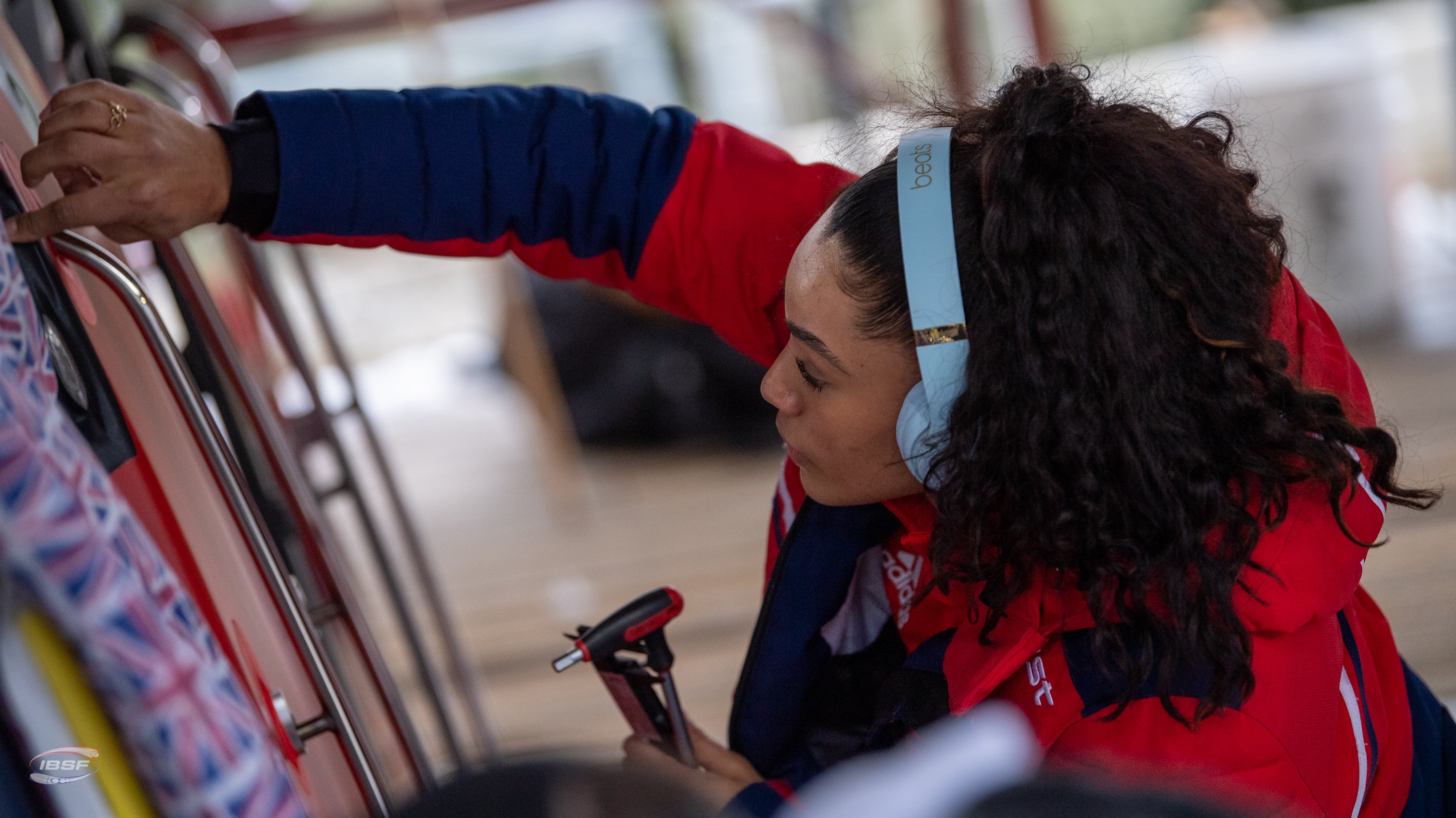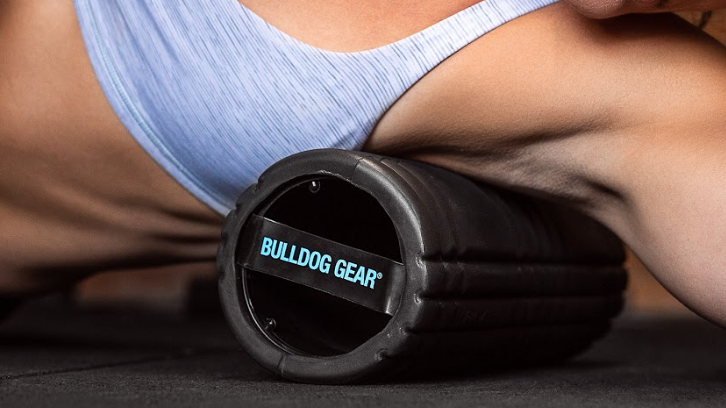|
26/08/2022 | Andrew Tracey Andrew Tracey is a long time collaborator with Bulldog Gear. A coach, writer and current fitness editor of Men’s Health Magazine, he has been in and around the fitness industry for the past 17 years. Having enjoyed and endured a number of disciplines from endurance racing, to strongman, to Crossfit AT enjoys getting neck deep in the practice just as much as the theory. |
Despite warnings from my mother to ‘always wear a hat in the cold’, ‘wrap up warm’ or the oft heard admonition that I’d ‘catch my death’, headed out for a long February day in nothing but a t-shirt; I’ve never been what’s colloquially known as a ‘cold blooded’ person. Always preferring to chance cooler climates significantly underdressed, and never feeling particularly phased by it.
And you know what? I’ve never consistently suffered, seriously, from any of the usual seasonally related maladies such as colds and flu’s.
Maybe there’s something in that, maybe there isn’t, but there’s a growing body of both scientific literature and anecdotal accounts to suggest that spending time exposing yourself to the cold, sometimes the extreme the cold, has a huge list of benefits that fly in the face of traditional wisdom.
Let’s take a look at a handful of the espoused benefits and the science that backs up the claims, before digging into four ways you can experience them for yourself.
Reduced Inflammation
With a few exceptions that we’ll cover, inflammation is rarely positive. As a defence mechanism your body puts in place to fight off harmful toxins, protect injured body parts or heal itself from infections, inflammation in and of itself shouldn’t be harmful. But, problems arise when the signals that your body is responding to linger, leading to chronic inflammation. Over time this continued inflammation can begin to have harmful effects on your body, with some research even indicating that it can lead to a range of maladies from strokes to cancer.
So yeah— having an inflammation ‘switch’= good. Jamming it into the ‘on’ position= bad.
A laundry list of modern day environmental triggers can lead to chronic inflammation, including: smoking, poor nutrition, obesity, alcohol and chronic stress. But, cold exposure can go a long way in helping to lower and control the inflammation response, through a multitude of pathways.
As your core temperature drops your blood vessels begin to constrict almost immediately, once you begin to ‘thaw off’ your blood vessels begin to dilate again, ‘flushing through’ not only blood, but helping to regulate other fluids in your body as your lymphatic system encounters a similar process.
Beyond this acute response, scientists have also observed that consistent, repeated bouts of cold exposure increase your body’s ability to stave of inflammation, even after cold exposure, by upping the production of a number of anti-inflammatory chemicals.
But there’s a catch…
The one small caveat that often goes overlooked as ice baths are lauded as the holy grail of recovery— is that inflammation is a natural and even essential part of the muscle building process; so avoiding a cold dip immediately post-workout is advised.
Improved Mood and Focus
Exposure to cold causes a huge surge in the hormones dopamine, epinephrine (aka adrenaline) and norepinephrine. These chemicals are responsible for elevating mood, increasing focus and alertness, respectively.
Unlike other ‘quick and dirty’ ways of achieving these chemical hits (think sex, drugs and rock and roll), cold exposure creates a longer lasting, more level release of the compounds, that slowly subsides back to baseline; unlike other quick hits which come down just as quickly as they surge upwards, which can result in low moods and ‘addict-like’ behaviour patterns.
This one-two punch of dopamine and adrenaline can leave you feeling not just focussed, but happy— creating an ideal environment for work or play.
Anecdotally speaking, it’s very rare to encounter someone who doesn’t experience a ‘revved up’ feeling of wellbeing, focus and drive after a deliberate cold plunge or cold shower.
Admittedly, the science around the long term effects of cold exposure on mental health is in it’s infancy, but the data so far is looking promising, and it may well be that cold exposure has longer spanning effects on the symptoms of depression and anxiety, than a simple post-ice bath pick me up.
Training Mental Strength and Building Grit
By deliberately exposing yourself to an extremely uncomfortable stressor, and staying there, against your immediate reflex to exit, you’re exerting what’s known as ‘top-down’ control over your brain; using the more recently evolved ‘planning and decision making’ parts of your brain to override the more impulsive, ‘instinctual’ areas.
Regularly training this capacity to make deliberate, informed choices against a barrage of evolutionary and hormonal signals has significant real world carryover— helping you to stay calm and collected in the face of life’s (many) stressors. This ability to plot a course, and hold it, against ongoing mental chatter is what most people refer to as ‘grit’.
Learning to control our responses to external stimuli, both good and bad, is a huge piece of the puzzle when it comes to living a deliberate, examined life; and there’s no better way to train that capacity than deliberately exposing yourself to uncomfortable experiences, in controlled situations.
Expect: increased willpower, controlled moods and higher stress tolerance.
Increased Metabolism
Although this one ranks right up top for a lot of people (and even more so for unscrupulous marketers), the actual increase in metabolic rate, and thusly, calorie expenditure, from cold exposure isn’t all that and a bag of fat free crisps.
You can expect to see a rapid rise in energy expenditure as soon as you hit the water of an ice bath, however, the amount of time it’s actually possible to remain safely submerged pretty quickly nullifies any claims of a ‘massive calorie’ burn, when extrapolated over the course of the day.
There is a silver-lining in this cloud though— despite the acute effects on metabolism being a bit of a dud; prolonged exposure forces your body to adapt by converting your run-of-the-mill ‘white fat cells’, to their much more metabolically active cousin, brown fat. The same mechanisms can also help to lower blood sugar and regulate your insulin sensitivity, all green flags for body composition improvements.
However, research does also indicate that cold exposure can lead to increased appetite. And, despite increases in metabolism— stabilised weight. So if your goal is weight loss, we’re sorry to report that you’ll still have to adhere to the all encompassing law of ‘calories in, calories out’. You’ll just receive a little boost on the ‘calories out’ side of the equation.
Ready to Take the Plunge? Here’s How
Whether you’re sold on the benefits of cold exposure and ready to make it a regular part of your regime, or keen to play citizen scientist and see how these effects play out in the laboratory of your own life— we’ve got four methods to help you take the plunge.
Cold Showers

As simple as it sounds; hop in, crank the faucets down to cold, up to full blast and let the water do the rest.
If you’re not ready to leave the hot tap untouched just yet, ‘hot to cold’ contrast showers are heavily featured in much of the research around cold exposure, with some evidence showing that a thirty second, icy blast at the end of your regular shower can yield many of the benefits laid out above.
You can experiment with gradually increasing the length of your frigid finale, or incrementally lowering the temperature of your regular shower over the course of a month, until it bottoms out and you’ve mastered the cold shower.
To get the most out of the experience: finish on cold and allow yourself to air dry naturally, standing still if possible; this forces your body (and thusly your metabolism) to do most of the hard work of warming you up.
Home Ice Bath
This one is as simple as it sounds, but you might require some help with the details.

Many people overlook the fact that they can use their actual bathtub for the purpose of cold exposure, opting instead for purpose built containers, wheelie bins or paddling pools. These are all great, but faffing around setting them up can be a barrier to entry and get in the way of regular, consistent exposure; your regular bathtub however comes complete with a trustworthy water supply and inbuilt drainage. Ideal, really.
For an optimal experience some sources recommend using a 3:1 ratio of cold water and ice. However, most of the research around cold exposure utilises water in the range of 7-15 degrees, so your goal is to get the temperature of your bath somewhere into this ball park and have it stay there for the duration of your bath, however much ice that requires.
You can begin by experimenting with 2-3kgs of ice, in a fairly shallow bath (you still want to be submerged up to the neck for maximum benefits), and add more next time if the desired temperature wasn’t achieved.
Remember, simply hitting a temperature that ‘makes you want to get out’, is enough to begin experiencing many of the mental benefits of cold exposure.
Chest Freezer Ice Bath
Although strange to look at, one of the most convenient and sustainable methods for continued cold exposure is to invest in a top opening chest freezer (yes, the type you keep in your kitchen.)

With a few modifications, such as sealing the internal edges to protect against leakage, a chest freezer can quickly and efficiently lower a body of water down to temperatures just above freezing and keep it there.
Regular water changes will be necessary, as with any modality here, but most chest freezers have a drain out point located in a bottom corner to assist in defrosting, which is perfect for our needs.
Chucking in some ice can help to assist your freezer in lowering the water to your desired temperature, quickly, and the fact that it’s purpose designed to be optimally insulated will help you to maintain that temperature. You’ll only have to periodically turn the appliance on again to help it drop a degree or two.
This should go without saying, but ensure that your freezer is NOT connected to any power supply whilst you’re submerged, and regularly check for signs of internal leakage that could possibly damage the electrics.
Wild Swimming
If you’re reading this from this from any country suitably removed from the equator, you’re probably well aware that naturally occurring bodies of water such as lakes, river and of course- the sea, aren’t exactly ‘year round’ tourists traps, due to their less than hospitable temperature for all but a few months of the year.

But, what we lose in beach fun, we can make up for in cold exposure therapy.
With the sea in the UK dropping into, and then below, the temperature range that nearly all cold exposure studies consider ‘cold’ for most of the year, a sea dip presents the perfect opportunity for a cold plunge.
If you live close to the sea, your best strategy is to start a regular ‘dipping practice’ whilst the waters are still relatively warm. This way you’ll become gradually acclimatised as the temperatures drop steadily towards the low single digits.
The same principle can be applied to small rivers and streams, as well as local lakes, but please take as many safety precautions as possible: avoid wild swimming alone; joining a wild swimming club if you can, keep your head and extremities warm in the colder months, and be sure you have recourse to warm-up as quickly as possible, post swim.



